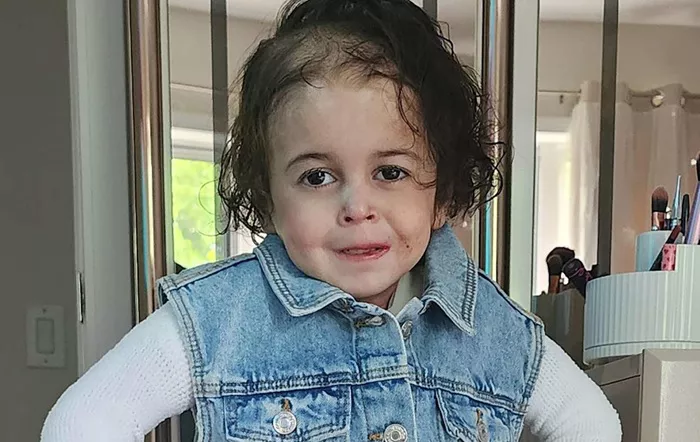Nine-year-old Tayma Laalej from Methuen, Massachusetts, suffers from severe recessive dystrophic Epidermolysis Bullosa (EB), a rare genetic disorder that makes her skin extremely fragile and prone to painful blisters and wounds. Known as “butterfly disease,” EB leaves the skin as delicate as butterfly wings, forcing Tayma to wear protective bandages and a full-body jumpsuit.
Tayma’s symptoms appeared soon after birth when her skin blistered and peeled from routine care. She spent her first weeks in the NICU as doctors diagnosed her condition. Despite seven years of care, Tayma still has large, unhealed wounds, including a deep one on her back.
Her mother, Zineb Laalej, explains that Tayma’s skin is so sensitive that summer heat and minor injuries cause intense pain. Tayma requires morphine and ibuprofen for pain management, and simple activities like bathing are agonizing. Treatments such as surgeries and creams have not improved her condition.
Dr. Diana Reusch, who treats Tayma at the only EB clinic in the Northeast, says there is currently no cure or preventative treatment for EB blisters and wounds. The disease varies widely: some patients have mild symptoms, while others, like Tayma, face constant, severe pain and risk of complications like infections and skin cancer. Many with severe EB do not live beyond age 30.
Tayma sees doctors every two weeks and remains brave despite the hardship. Her mother and father, Tarik, provide round-the-clock care, starting early each morning.
Social challenges are also difficult. Tayma’s difference often leads to painful reactions from other children, which breaks her heart. “I know I can’t play on the playground,” Tayma says, aware of the dangers.
Zineb emphasizes, “Every kid is beautiful, and some kids are different.” She comforts Tayma daily with love and words of strength, telling her, “This is my beautiful daughter.”
Related topics:


